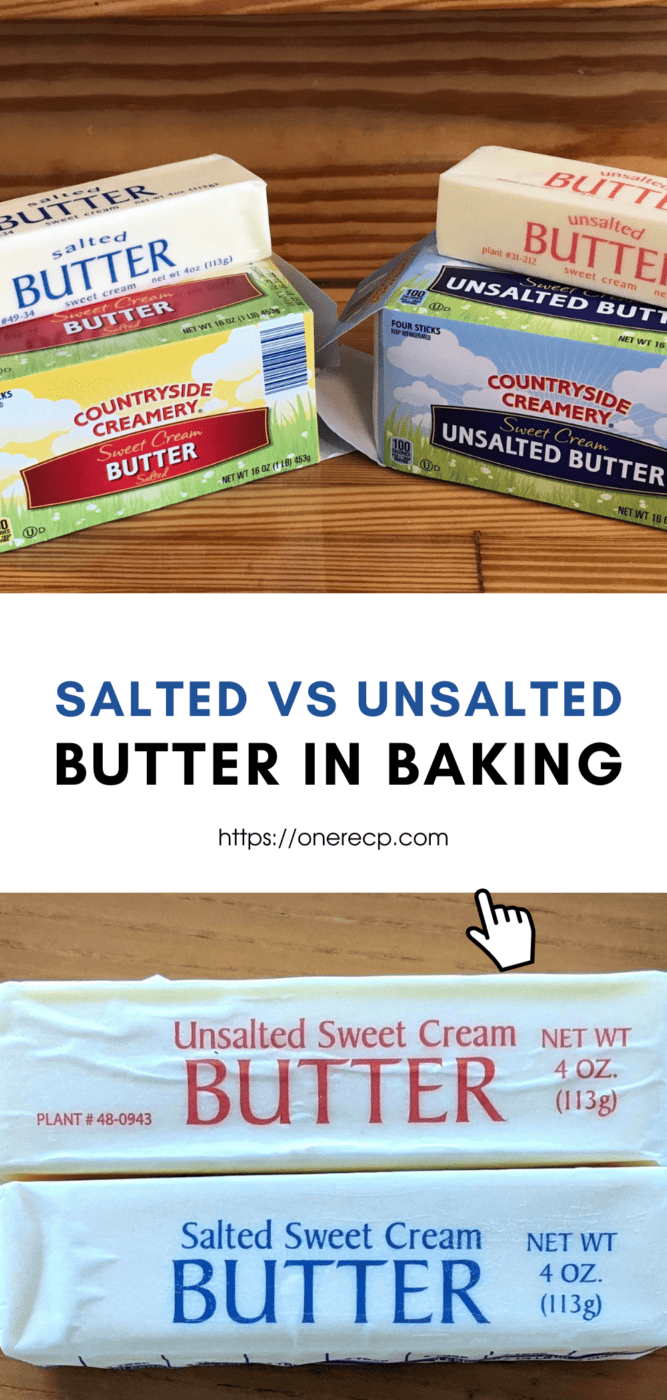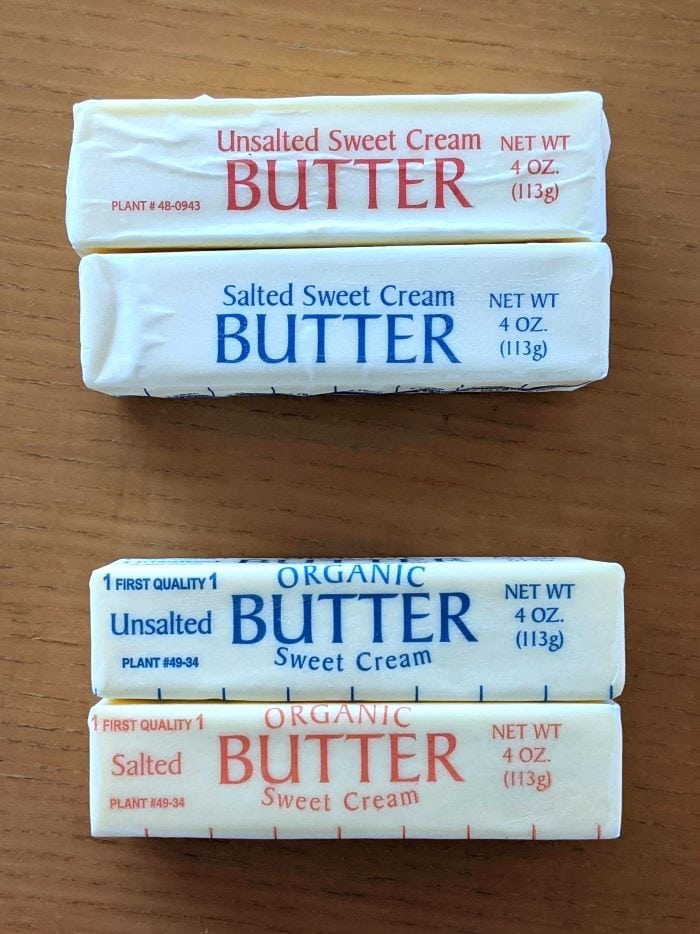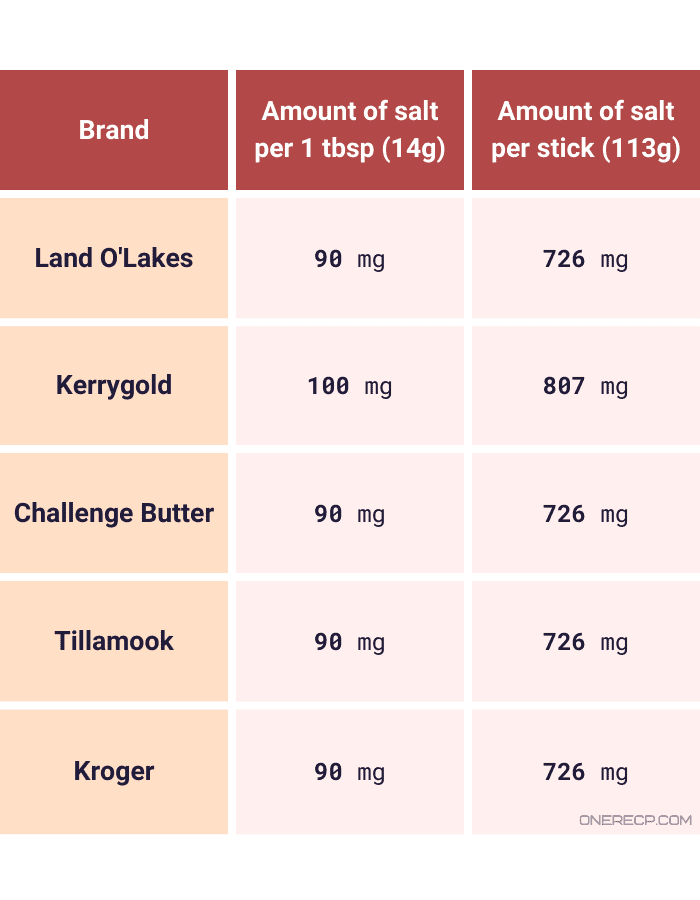Butter is a staple ingredient that’s used for anything from breads, cakes and pies to pasta sauces, soups and gravy.
Even though telling if a recipe calls for salted or unsalted butter isn’t difficult, it can be confusing when you’re baking.
Most bread recipes, for instance, are made with unsalted butter since using too much can kill yeast.
At the same time, however, the lack of salt in many desserts such as chocolate chip cookies or carrot cake can make them taste flat.
Generally speaking, in baking it’s accepted to only use salted butter if the recipe specifically calls for it. However, there are some exceptions to the rule which I will address below.
Keep reading to find out when to use salted vs unsalted butter in baking.

How to tell if a recipe calls for salted or unsalted butter
Most modern recipes are revisions of classic dishes that were made with unsalted butter.
The reason for this is because salted butter was much more expensive to produce in the past and it was made in lesser quantities.
With industrialization, however, this trend quickly turned around and salted butter became the new norm.
So how should you figure out if a recipe calls for salted or unsalted butter?
The general rule of thumb when cooking with butter is to use salted butter for savory dishes or meats, and unsalted butter for desserts, fruits, and heavy greens. Some baked goods can also be made with salted butter, but you should avoid using it unless the recipe specifies it.
Even though adding salted butter to desserts isn’t unheard of, it’s not something I advise since you can make them too salty by mistake.
However, I decided to include a simple method you can use to substitute unsalted butter with salted butter in case you’re out of stock.
But before we get to it, we’ll see why unsalted butter is heralded as the “king” in baking.
Salted versus Unsalted Butter in baking
Even though it may seem insignificant, the difference in salt content between salted and unsalted butter significantly affects the way they’re used in baking.
Salted butter is mostly reserved for desserts which benefit from small amounts of salt such as cookies.
Using it in yeast breads or pastries, however, isn’t recommended since it can decrease their volume.
Unsalted butter, on the other hand, is much more prevalent and can be used for anything from homemade brownie mixes, pastry dough, and biscuits to cakes and brioches.
Its use enriches the flavor of baked goods, provides structure and gives desserts a tender crumb.
Needless to say, unsalted butter also allows you to control the exact amount of salt a recipe calls for.
Here’s a recipe for a phyllo dough pie with feta cheese called Banitsa which uses unsalted butter. The feta more than enough makes up for the salt contents of the Banitsa pie.
Another difference between these two types of butter is their shelf life.
Since salt acts as a preservative, salted butter has a longer shelf life than unsalted butter.
As a result, salted butter may not always be as fresh as unsalted butter.
So if you want to keep the taste of your desserts and cakes light and creamy it’s better to stick to unsalted butter.

by SimbaPenn
Can you use salted butter instead of unsalted when baking?
Sometimes circumstances force us to improvise and come up with substitutes for certain recipe ingredients. When I quit alcohol, I had to find a non-alcoholic substitute for one of my favorite ingredients – Shaoxing Wine.
And even though I was initially skeptical, it turned out there were quite a few viable alternatives to my beloved Chinese wine.
Well, if you only have salted butter you’ll be glad to hear you can use it to achieve the same results. You just have to be extra careful with the amount of salt you add.
The first time I ran out of unsalted butter was when I was making a cake for my parents’ anniversary.
Pressed by time, I had to quickly find out if I could use the salted butter I had at hand. After doing some research, I found the butter I had at the time contained 90 mg of Sodium per tablespoon or roughly a 1/4 tsp of salt per stick. So I simply removed a 1/4 tsp of salt from my recipe and my cake turned out just splendid!
This experience buttered up my curiosity so I set out to find whether the most popular brands of salted butter in the US contained equal amounts of salt.
Here’s what I found:

As you can see, four of the top five brands of salted butter on the U.S. market have the same amount of salt.
The only exception is Kerrygold which is slightly saltier, with 100 mg of salt per 1 tbsp (14g) of butter compared to the 90 mg found in the other brands.
Using this information, I came up with a method that lets you find the exact amount of salt you need to use if you substitute unsalted for salted butter.
How to substitute salted and unsalted butter for each other in recipes
Here’s how replacing unsalted with salted butter in recipes works:
When you bake with salted butter, you have to remove a 1/4 tsp of salt for every stick of unsalted butter the original recipe calls for. So if the original recipe is made with 2 sticks of unsalted butter (226g) and 1 tsp of salt, you’ll need to add only half a teaspoon of salt.
Conversely, if you want to make salted butter from unsalted butter, you should add 1/4 tsp of salt for every stick of unsalted butter.
In case there isn’t any salt in the recipe, you should simply add a bit more sugar to balance out the flavor.
This method could also be used if you want to cook a dish that is typically prepared with salted butter.
In this case, you’ll have to increase the amount of salt by 1/4 tsp for every stick of salted butter you substitute.
You don’t need to add salt to the unsalted butter as it won’t impact the final flavor of the dish in any way.
My Final Takeaway
Salted and unsalted butter both have their own merits.
Salted butter shines when it’s used as a toast spread or a condiment.
Unsalted butter on the other hand is widely appreciated in the baking world for the structure and freshness it provides.
In many cases, both types of butter can be used interchangeably.
However, using salted butter in some baking recipes can lead to undesired results.
Therefore it’s always better to use unsalted butter when you’re baking or the recipe doesn’t specify the kind of butter that should be used.